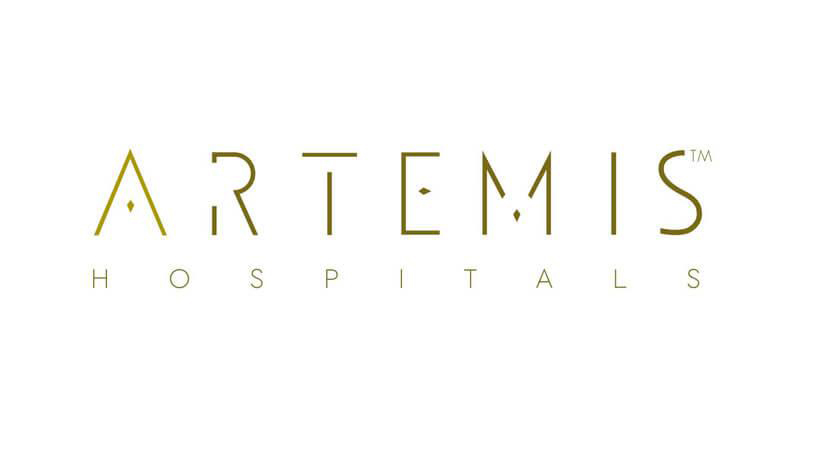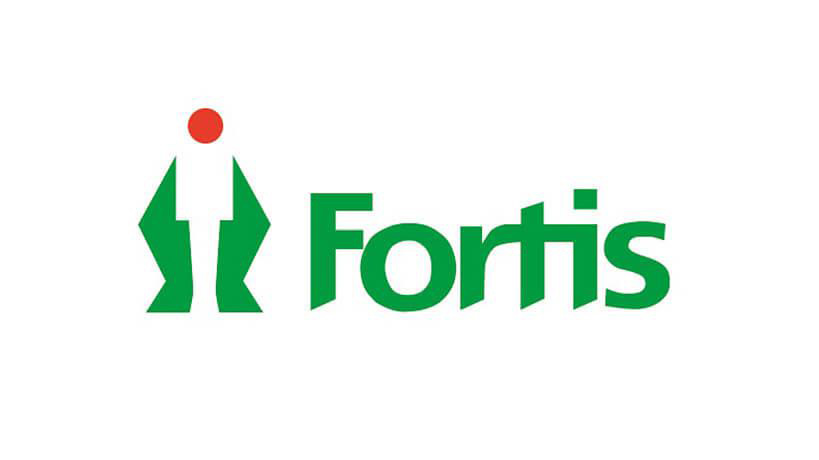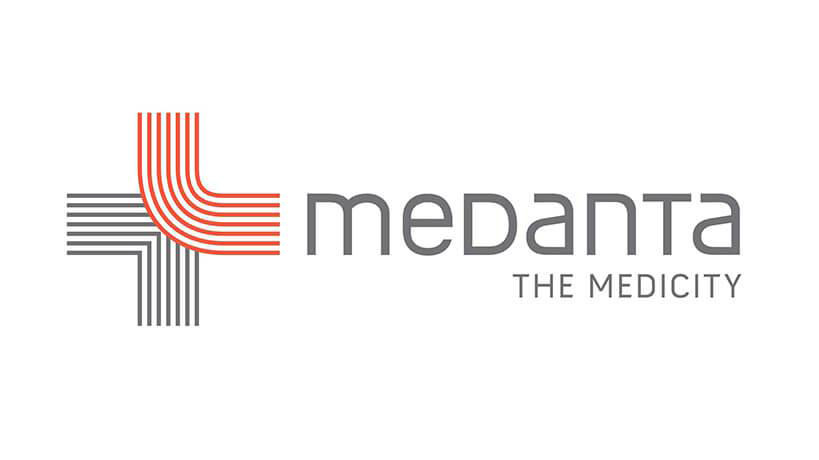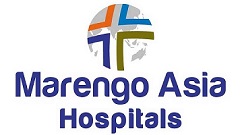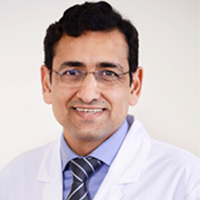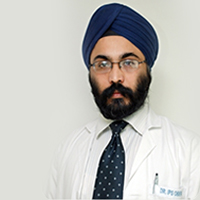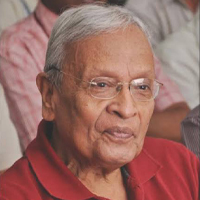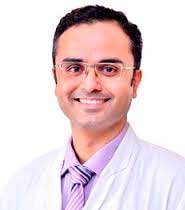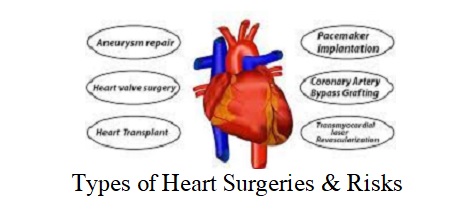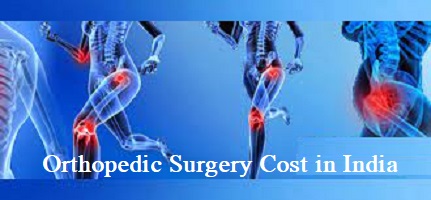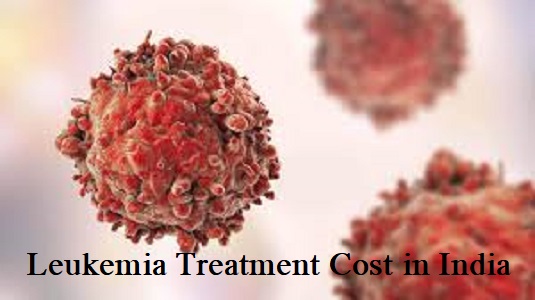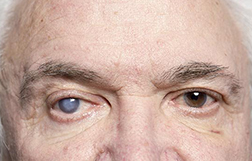
Get Free Treatment Plan From Top Hospital
Attach Medical Report
Cataract Surgery in India
Cataract surgery in India is a prevalent and highly successful treatment used for treating cataracts. Normal natural eye lens is transparent and clear. With normal aging and due to some other medical conditions the clear and transparent eye lenses become cloudy and opaque. A cataract is caused by clouding of the clear lens of the eye. This cloudiness can cause diminished or distorted vision, affecting daily tasks. Cataracts are common in elderly people, with more than half of adults over the age of 65 having one or both eyes affected. Cataracts alone account for 50% of all blindness cases worldwide.
The clouded lens is removed and replaced with an artificial intraocular lens (IOL) during this outpatient surgery, which is generally safe. There are numerous varieties of IOLs available, such as monofocal, multifocal, and toric, each of which can address a distinct vision condition. Cataract surgery in India tends to be done on each eye separately, improving vision and reducing the need for glasses or contacts.
Formation of Cataract
Cataracts develop when the normal lens of the eye becomes clouded and opaque over time. This cloudiness blocks light from reaching the retina, where it gets converted into nerve signals for interpretation in the brain. The clouding is caused by aging and, in some cases, medical problems that cause proteins and fibers within the lens to break down and clump together. Cataracts scatter and hide light as they develop, resulting in blurred vision. While cataracts normally grow in both eyes, their development rates may differ, resulting in differences in vision quality between the eyes.
Types of Cataract
Cataract surgery in India is a major procedure that treats various forms of cataracts that grow in different parts of the eye’s lens. There are three types of cataract:
- Nuclear Cataract: This type of cataract originates in the nucleus of the lens. It is often age-related and originates from changes in the protein structure of the lens over time.
- Cortical Cataract: Cortical cataracts begin on the lens’s outer edge and move toward the center. Diabetes patients have a greater possibility of suffering from cortical cataracts.
- Subcapsular Cataract: This cataract begins at the back of the lens. Diabetes, high farsightedness, retinitis pigmentosa, and those using large dosages of steroids are all associated with the risk for subcapsular cataracts.
Causes of Cataract
Cataracts reduce lens clarity, causing light to scatter and block, resulting in blurred vision. While cataracts can develop in both eyes, their progression rates may differ, leading to different levels of vision impairment between the eyes. Cataract develops due to the following causes:
- Aging: Most cataracts develop as a natural part of the aging process. The lenses in the eyes become less flexible, less clear, and thicker over time. Proteins and fibers in the lens decay and clump together, producing clouding in the lens.
- Injury: Eye injuries may accelerate the formation of cataracts by causing damage to the eye’s lens.
- Genetic Factors: Some inherited conditions might raise the chance of cataracts, especially when combined with other health issues, such as Down’s syndrome, Alport’s syndrome, Cri-du-chat syndrome etc.
- Medical Conditions: Diabetes, hypertension, vitamin (C and E), selenium, beta-carotene, and lycopene deficiencies have all been linked to an increased risk of cataracts.
- Eye Conditions: Other eye problems or past eye surgeries can contribute to cataract formation.
- Steroid Medications: Long-term use of certain medications, such as sedatives, heart medications, epilepsy medications, cholesterol-lowering medications, and corticosteroids, may increase the risk of cataracts.
Right Candidate for Cataract Surgery in India
Individuals who suffer from the following visual issues may be candidates for cataract surgery in India:
- Blurred Vision: Cataracts can cause eyesight to become hazy or clouded, leading to blurred vision, which can interfere with daily tasks.
- Poor Night Vision: Difficulty seeing clearly at night, or feeling glare and halos around lights, can be signs of cataract-related vision problems.
- Faded Colors: Cataracts can cause colors to appear less vivid or “washed out” when the lens of the eye is cloudy.
- Glare and Halos around Lights: Glare sensitivity and the appearance of halos around lights, in particular at night, can be unpleasant and could indicate cataract-related vision problems.
- Light Sensitivity: Cataracts may result in increased sensitivity to light, making it uncomfortable to remain in bright light conditions.
- Frequent Changes in Glasses Prescription: If you discover that you must change your glasses prescription often to achieve clear vision, cataracts may be an issue.
- Need for Brighter Light When Reading: Cataracts can make reading difficult, necessitating more powerful lighting conditions to view text well.
- Double Vision: Experiencing double vision, particularly when one eye is closed, can be a sign that cataracts are causing problems with vision.
Symptoms of Cataract
Cataracts usually grow slowly, and symptoms may be undetectable in the early stages. Individuals could experience the following symptoms when their cataract progresses:
- Cloudy or hazy appearance of the eye lens
- Blurred vision
- Double vision in one eye
- Sensitivity to glare
- Difficulty with night vision
- Seeing halos around lights
- Requirement for brighter light for activities
- Changes in eyeglass or contact lens prescription on a regular basis
- Fading or yellowing of colors
Cataract Diagnosis in India
Cataract diagnosis in India involves a thorough examination and several tests to determine the presence and severity of the condition. Some of the diagnostic procedures in India include:
- Visual Acuity Tests: Patients are asked to read letters that are decreasing in size on an eye chart or a reading device. To examine the clarity of vision and identify any problems, one eye is tested at a time.
- Slit Lamp Examination: A slit lamp exam, commonly known as biomicroscopy, is performed. This involves using a specialized microscope to examine the front parts of the eye, including the cornea, iris, lens, and space between them. This examination helps in the detection and extent of cataracts.
- Retina Examination: To determine the impact of cataracts on the lens, eye drops dilate the pupils, allowing the doctor to see the retina more clearly. This procedure helps in determining the condition of the lens.
- Refraction Test: A refraction test can be used to identify any refractive errors that may coexist with cataracts, such as nearsightedness or farsightedness.
- Visual Field Testing: This exam evaluates the extent of peripheral vision and visibility in the surrounding area. It is used to detect and monitor diseases such as cataracts.
- Optical Coherence Tomography (OCT): OCT is a non-invasive imaging technology that produces detailed cross-sectional images of the eye parts. It helps in determining lens thickness and integrity, as well as any macular changes or swelling associated with cataracts.
- Contrast Sensitivity Test: This test evaluates the ability to distinguish things with low contrast, such as changing shades of grey or minor changes in light and dark. It evaluates the ability to distinguish details under various lighting settings, which could be damaged by cataracts.
Cataract Treatment in India
Initial treatments such as eye drops or powered lenses may be provided if you have blurred or cloudy vision due to cataracts. If these preventative measures fail, cataract surgery is often recommended. Top eye care and eye surgery hospitals in India offer both surgical and non-surgical cataract options for treatment. Cataract surgery is a common and successful treatment option. Cataract treatment without surgery is also available in India. These options are appropriate for some people, and the decision between surgical and non-surgical treatments is determined by the individual’s condition and preferences.
Types of Cataract Surgery in India
- Phacoemulsification (Phaco Cataract Surgery): This is the most commonly used and preferred approach to cataract surgery in India. A tiny incision (typically 2-3 millimeters) is made at the front of the eye during phacoemulsification. To dissolve the hazy lens and break it into little pieces, an ultrasonic handpiece with a titanium or steel tip is used. The particles are then suctioned gently out of the eye. After cataract removal, a foldable intraocular lens (IOL) is placed through the same incision. This approach lowers scarring, shortens recovery time, and is most suited for individuals with less severe cataracts.
- Extracapsular Cataract Surgery (ECCE): If the cataract is advanced and cannot be properly treated with phacoemulsification, ECCE may be suggested. This treatment involves making a larger incision, often between 10 and 12 millimeters in length, to remove the entire cataract-affected lens in one piece. While ECCE is more complicated and may require sutures to close the incision, it is still performed in some cases.
- SICS (Small Incision Cataract Surgery): SICS is a modern surgical procedure that lies somewhere between phacoemulsification and traditional ECCE. It requires a smaller incision, usually 5-6 millimeters. Patients with moderately broad cataracts benefit the most from SICS. The cataract is removed using fluid pressure, which has the advantage of not requiring sutures, resulting in a faster and more comfortable recovery.
- Intracapsular Cataract Extraction (ICCE): This is an older and less common treatment that involves removing the entire lens and its surrounding capsule as a single unit. This procedure has a higher risk of complications and is rarely used for cataract surgery in India. It is mostly used when recent procedures are unsuccessful.
- Femtosecond Laser-Assisted Cataract Surgery (FLACS): FLACS is an innovative method that uses a femtosecond laser to perform critical surgical processes. The laser is used to make precise corneal incisions, open the lens capsule, and fragment the cataract. This innovative approach improves precision while reducing the need for certain surgical instruments.
- Femto Laser or Robot-Assisted (FLAC) Cataract Surgery: FLAC cataract surgery is becoming more popular as a bladeless cataract surgery procedure. It uses computer-guided lasers to help the eye surgeon remove the cataract-affected lens. During surgery, surgeons are able to program the laser for maximum precision and safety. The US FDA has approved this method, which can improve eyesight quality, minimize visual deformations, and broaden the range of vision. The cost of FLAC cataract surgery in India can vary according to the type of lens implant used.
- Minimally Invasive Cataract Surgery (MICS): MICS is a cataract removal procedure that uses a tiny incision, usually less than 1.8 mm, to remove the cataract. This minimally invasive technique can usually be finished in 10 minutes or less. MICS is a great option for those who have very tiny or thick cataracts. One of the major benefits of MICS is that the small incision causes fewer traumas and scarring, which can lead to a faster recovery period when compared to standard cataract removal treatments.
Types of Intraocular Lens (IOL) used in Cataract Surgery in India
The main types of intraocular lenses commonly used in cataract surgery in India are:
- Monofocal Intraocular Lens (IOL): Monofocal lenses are the most common and cost-effective option for cataract patients. These lenses offer sharp vision at a single focal point, which is commonly chosen for distance vision. Patients who choose monofocal IOLs may still need prescription eyeglasses for close-up work or reading. Monofocal lens prices in India vary according to brand and quality.
- Multifocal Intraocular Lens (IOL): Multifocal intraocular lenses (IOLs) are designed to provide clear vision for both near and far vision. Because they eliminate the need for reading glasses, these lenses are commonly referred to as presbyopia-correcting IOLs. Multifocal IOLs have many rings that focus light on different areas of the retina at the same time. Blue light filters and anti-PCO (Posterior Capsule Opacification) rings are available for enhanced vision quality.
- Trifocal Intraocular Lens (IOL): Trifocal intraocular lenses (IOLs) are designed to offer clear vision at three focal distances: long distance, intermediate vision, and short distance or reading vision.
- Toric Intraocular Lens (IOL): Toric IOLs are designed to fix astigmatism as well as provide clear vision at different distances. These lenses can correct long-distance vision, near-distance vision, and cylindrical power. They have contributed to an important breakthrough in cataract surgery in India enabling top eye surgeons to correct corneal astigmatism.
Cataract Surgery Procedure in India
- Anesthesia: Cataract surgery is performed in India under local anesthesia, which numbs the eye with eye drops or an injection near the eye. This keeps the patient comfortable and pain-free throughout the operation.
- Incision: An incision is created in the cornea, the clear front part of the eye. In traditional extracapsular cataract extraction (ECCE), this incision is made manually using a surgical blade, but in laser-assisted cataract surgery (LACS), it is made with the help of a femtosecond laser.
- Capsulotomy: A circular opening develops in the front part of the lens capsule after the initial incision has been made. This procedure allows access to the cataract-affected lens, which is placed behind the capsule.
- Phacoemulsification or Lens Fragmentation: It is the most common method which involves an ultrasonic device that uses high-frequency sound waves to break up the cataract-affected lens into tiny fragments. These particles are then suctioned out gently using the same method. Manual or laser-assisted procedures may be used in certain cases to manually remove or break the cataract.
- IOL Implantation: After the cataract has been removed completely, an intraocular lens (IOL) is implanted through the same incision and placed within the empty lens capsule. The IOL is a transparent artificial lens that is supposed to replace the natural lens, restoring clear vision.
- Wound Closure: The incision produced after cataract surgery is usually self-sealing and does not require stitches. It naturally recovers over time. In the case of the ECCE procedure, however, the surgeon may close the incision with sutures.
Risk Factors Associated with Cataract Surgery in India
Some of the possible risk factors associated with cataract surgery in India are:
- Eye bleeding or swelling
- Ongoing eye pain
- Blurred vision or vision loss
- Visual disturbances (glare, halos, shadows)
- IOL displacement
- Posterior capsular opacification (PCO)
- Retinal detachment
- Infection
- Anesthesia allergy
- Endophthalmitis
Popular Cataract Lens Brand Used in India
Several common cataract lens brands are used for cataract surgery in India. These companies manufacture a variety of best intraocular lenses (IOLs) to meet the demands of different patients. Some of the most common cataract lens brands in India are:
- Alcon: Alcon has a wide range of lenses available, including monofocal, multifocal, and toric lenses and are considered some of the best lens for cataract surgery in India.
- Johnson & Johnson (J&J): The Vision Care business of Johnson & Johnson manufactures IOLs under the brand names Tecnis and Eyhance. These IOLs come in monofocal, multifocal and toric lens designs and are recognized as some of the best lens options for cataract surgery in India.
- Zeiss: Zeiss is well-known for producing high-quality IOLs. They are often considered among the best lens choices for both standard and premium cataract surgery in India.
- Hoya: Hoya Surgical Optics offers a variety of IOLs for cataract surgery, including monofocal, multifocal, and toric lenses. Many surgeons consider Hoya lenses as some of the best lens options for cataract surgery in India.
- Rayner: Rayner is a UK-based company noted for its high-quality lens. Their Sulcoflex lenses are commonly used in cataract treatment in India and are considered among the best lens for cataract surgery in India.
- Appasamy: Appasamy Associates is an Indian manufacturer of IOLs that produces high-quality lenses.
- Aurolab: Aurolab provides low-cost IOLs that are often used in cataract surgeries in India.
- Iocare: Another Indian brand that offers IOLs for cataract surgery and is known for its low-cost solutions is Iocare. Many patients and surgeons consider Iocare lenses as among the best lens options for cataract surgery in India.
Cataract Lens Price List in India
- Monofocal Intraocular Lens (IOL): Different types of monofocal lens price in India are:
- Standard Quality Indian-Made Monofocal IOL: $265 – $300 per eye.
- Premium Quality Indian-Made Monofocal IOL: $360 -$400 per eye.
- Johnson & Johnson – Monofocal IOL: $520 -$1025 per eye.
- Multifocal Intraocular Lens (IOL): Different types of multifocal lens price in India are:
- Premium Quality Multifocal IOL (Indian Brands): $370 – $780 per eye.
- Multinational Company Brands (Alcon, Johnson & Johnson, Zeiss): $850 – $1100 per eye.
- Trifocal Intraocular Lens (IOL): Different types of trifocal lens price in India are:
- Premium Indian Trifocal IOL: $550 – $650 per eye.
- Zeiss Trifocal IOL: $900 – $1100 per eye.
- Johnson & Johnson Synergy Trifocal IOL: $785 – $985 per eye.
- Toric Intraocular Lens (IOL): Different types of toric lens price in India are:
- Premium Monofocal Toric IOL: $550 – $750 per eye.
- Premium Multifocal Toric IOL: $1150 – $1210 per eye.
Cataract Surgery Cost in India
Cataract surgery in India is a low-cost, high-quality treatment for those seeking improved vision. The average motiyabind operation cost in India or the cataract surgery cost in India is between $500 to USD 1500, making it considerably less expensive than in many Western countries. The price may vary based on the patient’s condition, the type of operation, the hospital that is, and the particular intraocular lens (IOL) chosen.
- Femto Laser-Assisted (FLAC) Cataract Surgery: Approximately $900 to $1400 USD.
- Zepto Cataract Surgery: Around $850 to $1300 USD.
- Phacoemulsification Cataract Surgery: Approximately $700 to $1200 USD.
Top Cataract Surgery Eye Hospital in India
- Eye Solutions, Kems Corner, Mumbai
- L V Prasad Eye Hospital, Hyderabad
- Spectra Eye Hospital, Kolkata
- Centre for Sight Hospital, Dwarka, and Safdarjung Enclave, New Delhi
- Fortis Memorial Research Institue, Gurgaon
- Sankara Nethralaya, Chennai
- The Sight Avenue, New Delhi
- MGM Healthcare, Chennai
- Eye Solutions, Injambakkam, Chennai
- Centre for Sight Avenue Hospital, Gurgaon
- Arvind Eye Hospital, Chennai
Best Cataract Surgery Eye Doctors in India
- Shagun Sood: Centre for Sight Eye Hospital, Gurgaon
- Anita Sethi: Fortis Memorial Research Institute, Gurgaon
- (Wg Cdr) Sapna Raina: Centre for Sight Eye Hospital, Gurgaon
- Anand Shroff: Shroff Eye Hospital, Mumbai
- Yogesh Arora: Navin Hospital, Greater Noida
- Abhishek Dave: Centre for Sight Eye Hospital, Ghaziabad
- Hemlata Gupta: Centre for Sight Eye Hospital, Gurgaon
- Rajiv Mohan: Mohan Eye Institute, New Delhi
- Harshvardhan Ghorpade: Fortis Hiranandani Hospital, Vashi
- Shuchi Verma: Fortis Memorial Research Institute, Gurgaon

Top Cataract Surgeons in India
An ophthalmologist (an eye expert) performs cataract surgery as an outpatient treatment or in a hospital. Patients’ clouded lenses are shattered and removed during cataract surgery. Afterward, the surgeon implants an artificial lens known as an intraocular implant, or IOL, into the eye. We have a team of seasoned experts ready to assist you in making that connection. Al Afiya Medi Tour gives you all the information you need to learn about the specialists who operate in their field of specialization. It doesn’t matter whether you reside in Faridabad, Delhi, or Gurgaon; you can book an appointment online with one of India’s top cochlear implant doctors. Professionals on our team are not only well-trained, but they also have a lot of experience in their respective professions. Our experts provide all the information you need to know about the top cataract surgeon.

Best Cataract Surgery Hospitals in India
Al Afiya Medi Tour follows the principle that we should serve our patients with the best possible medical care. Also, medical competence at rates that provide the greatest value for the money spent by the patients. We do this by keeping our costs as low as possible without compromising the quality of our patient’s treatment. All the treatment choices we provide to our customers come from well-known establishments in India, and we allow them to choose between surgical and non-surgical procedures.
All of our employees are highly qualified professionals that not only have years of experience but also have prestigious certifications. These professionals in the medical field are available at any time of the day or night to help you with any of your urgent medical needs and concerns. They are standing by to provide a hand. Al Afiya Medi Tourhas collaborated with a number of different hospitals that are generally acknowledged to be among the finest in their respective professions. These institutions include some of the most prestigious medical schools in the world. This not only broadens the scope of our expertise but also gives patients a variety of options to choose from when it comes to their treatment at prices that provide an amazing value for the amount of money spent.
Book An Appointment for Cataract Surgery

Get Free Treatment Plan From Top Hospital
Attach Medical Report

Cost of Cataract Surgery in India
Regarding getting medical treatment, India has swiftly become a favorite destination for people from all over the globe because of its low cost. The motiyabind operation cost in India might vary significantly from one hospital to another, as well as from city to city, and it also is contingent on the doctor’s charge. The precise cost of cataract surgery is determined by the facility where the procedure is performed as well as the kind of cataract surgery that is performed. Nevertheless, the cataract surgery cost in India is often in the range of 15,000 to 80,000 INR. The femtosecond laser cataract surgery cost in India ranges from around Rs. 18,000 to Rs. 1,00,000 per eye. This is because the procedure is both high-precision and minimally invasive. The zeiss cataract lenses price in India is around Rs 135,000 per eye.

Success Rate of Cataract Surgery in India
When cataract surgery is done, most people’s vision returns to normal.
People who have had cataract surgery run the risk of getting another cataract. In this case, your vision is blurry because debris has built up in the lens capsule, which was not cleaned out during surgery and is now having to hold the lens implant in place. The part of the lens that holds the optics in place is called the lens capsule. This is known as posterior capsule opacification in the medical field.
Yttrium-aluminum-garnet (YAG) laser capsulotomy, which is an outpatient procedure that takes about five minutes and is done by a doctor, can be used to treat PCO. In the YAG laser capsulotomy procedure, a laser beam is used to make a tiny hole in the cloudy capsule. By doing this, a clear path is made for light to move along.
You may have to stay in the doctor’s office for an hour after the procedure to check your eye pressure. Even though they don’t happen often, a rise in intraocular pressure and retinal detachment are both side effects that you should be aware of.
Contact Form
Attach Medical Report
Top Doctors & Surgeons in India
Why Choose Us

Personalized Care
24x7 Supports
Top NABH and JCI accredited Hospitals
Free Cost Estimation & Medical Opinion from Specialist
Get Free Tele/Video Consultation
Visa and Traveling Assistance
Post-surgery with Assistance in Follow-ups


